N channel depletion MOSFET is a 3 terminal device similar to N channel enhancement MOSFET. The only difference between the two is the existence of an N-channel. In N-channel depletion MOSFET, N-channel is already present. All other things are the same, as you can see in the figure below.
Also Read: Everything you need to know about MOSFET
MOSFET Structure
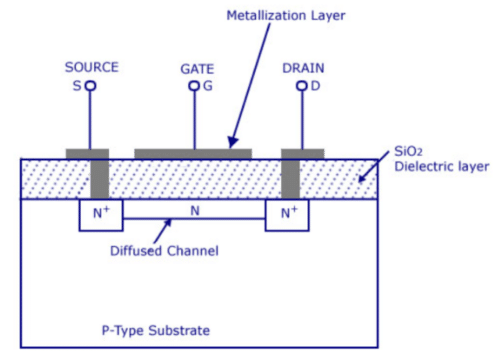
N Channel Depletion MOSFET – Working
Let us move on to the working of N channel depletion MOSFET followed by the VI characteristics. Since the channel is already present, unlike the enhancement type MOSFET, you also will get drain current at zero gate voltage.
In our first case, let us connect the Gate terminal to the ground and apply a positive voltage at the drain and source. On applying positive VDS, the electrons in the N channel will move towards the positive drain terminal, and the drain current will start flowing from drain to source. On increasing VDS further, keeping VGS 0, a time will come where ID will become constant, and that value of drain current is called saturation current.
We can conclude from this discussion that when VGS = 0 and VDS > 0, current ID flows from drain to source, and on increasing VDS further, ID = IS = IDSS, as shown in the figure below.
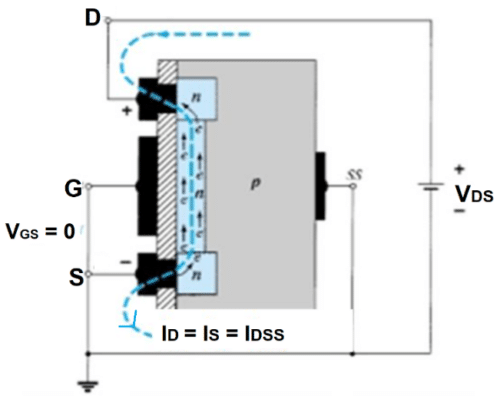
Now let us see the effect of gate voltage on N channel depletion MOSFET.
Apply VGS < 0. Holes from the P-type substrate will attract towards the negative gate terminal and recombine with electrons in the N channel, forming electron-hole pairs. On increasing negative potential at the gate, more electron-hole combinations will occur, decreasing the number of free electrons in the N channel. As a result, ID decreases. A time will come when the drain current will become zero. The negative gate voltage at which the drain current is zero is called pinch-off voltage or VP.
We can conclude from this discussion at pinch-off, VGS = VP, VDS > 0, and ID = 0, as shown in the figure below.
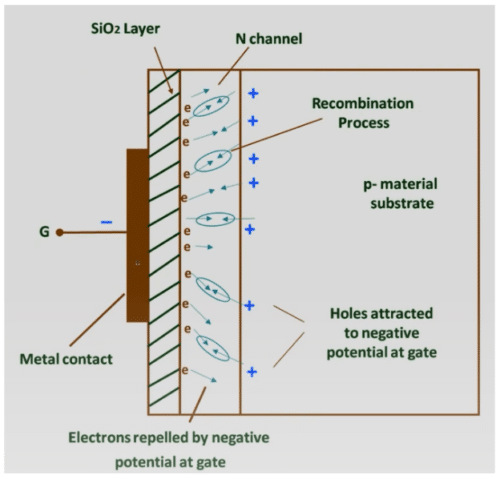
Now we will see the effect of positive gate voltage on the drain current.
On applying VGS > 0, the minority carriers in the p-type substrate, i.e. electrons, will get attracted towards the gate terminal, thereby increasing the concentration of electrons in the N-channel. As a result, the drain current will increase and exceed the saturation current. We can conclude from this discussion, when VGS > 0 and VDS > 0, then ID > IDSS, as shown in the figure below.
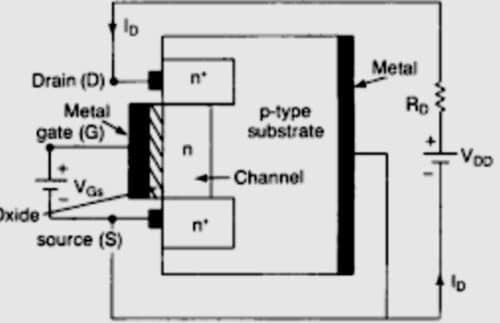
N channel Depletion MOSFET V-I Characteristics
As discussed earlier, depletion-type MOSFET worked for both positive and negative gate voltages. Now we can plot VI characteristics very easily. In the VI characteristics, you will see the plots of VDS vs ID for various values of VGS.
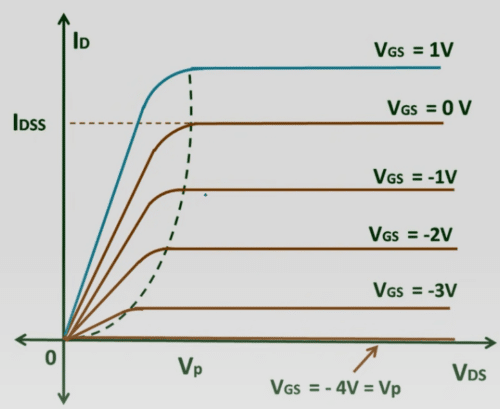
The graph shows that the current ID will flow for both positive and negative values of VGS. You can see from the graph that the drain current is less than the saturation current for the negative value of gate voltage, whereas for the positive value of gate voltage, the drain current exceeds the saturation current. VGS = VP is also represented in this graph for which drain current is zero irrespective of drain to source voltage.







